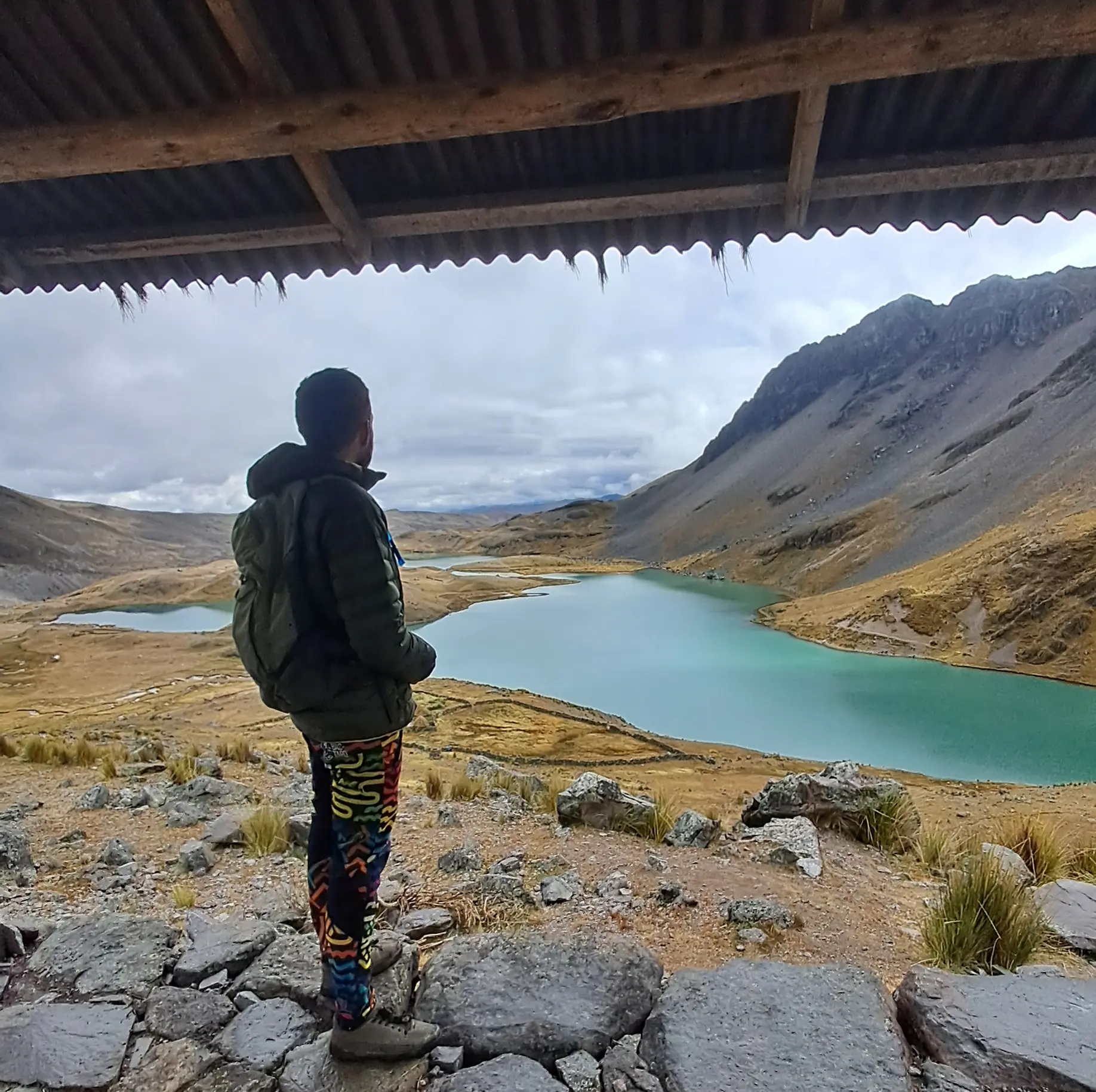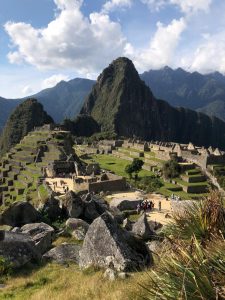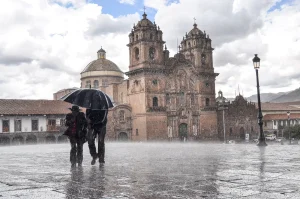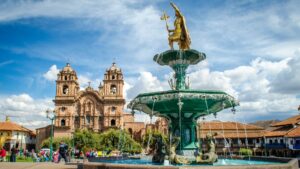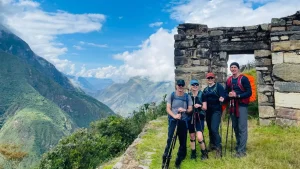On my travel to Peru, I was looking for a hike that could take me deep into the Andes, where towering snow-capped peaks guard hidden glacier-fed lakes. That search led me to the 7 Lakes trek in Ausangate mt, a trail that reveals colorful lagoons in shades of turquoise, emerald, and cobalt, all set against the dramatic Ausangate glacier in the background. The scenery feels untouched and raw, with llamas and alpacas grazing freely and valleys stretching endlessly beneath the high-altitude sky.
I had to seize the short time of my travel in this beautiful country, so I came across multi-day hikes in the same area, but I got totally convinced once I learnt this trip included Hot Springs by the end. I mean, at this point I was already bought into it, but what a bundle for a single day trip.
After my great experience at The Short Inca Trail, I decided to book this trip with 69 Explorer again. They are really professional and their Itineraries, service level and knowledgeable guides fit mi travel preferences just perfectly. This time, Jorge was once again our guide and we had a new driver, Sadam.
From Cusco to Pacchanta
They picked us from our hotels around 5:30am and then we traveled south. Along the south valley, we experienced the sunrise. This was a magical moment that set the tone for the upcoming adventure. After about 2.5 hours we arrived in Pacchanta, a tiny town right at the trailhead.
Upon arrival in Pacchanta, we had an energizing and filling breakfast. They served us a bowl of fruit, freshly baked bread, coffee and scrambled eggs. As soon as we were done with our meals, Jorge briefed us on the hike ahead of us and we got ready to start the adventure. He did also explain about the area’s ecosystem, which is the Andean Puna. A high-altitude grassland found above 3500 m (11483 ft), characterized by cold temperatures, strong solar radiation, and hardy vegetation like ichu grass. It supports unique wildlife such as vicuñas, condors, and Andean foxes.
7 lakes Trek
First segment (Pachanta Town)
The hike’s trailhead is located at 4307 m (14131 ft), so altitude was a challenge from the first step. Luckily for us, the first 3 km were mostly flattish and took us about 1.5 hours. This first segment let us get used to the altitude and took us next to a beautiful stream. This area had many cabins made out of rocks. It was eye-opening learning about people’s lifestyle in this area, they spend most of their time farming or herding their animals.
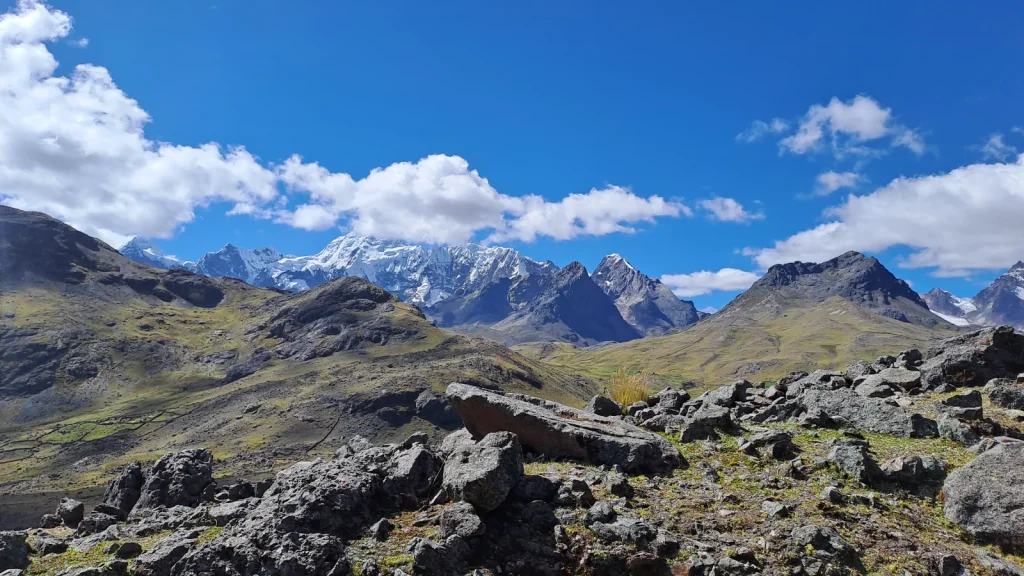
Second segment, toughest part of the day
The next 2.5 km started with a steep climb, that sapped our energy. After this first challenging climb, the trial turned easier, with consecutive rolling hills. It took us about 1.5 hours to get to our first lake of the day: Pucacocha. Its name translates to “red lake” in Quechua. Its reddish hue is caused by mineral-rich soils.
Third segment, hike around the top lakes
From this point, the rest of the hike is not as demanding. We continued the loop visiting Oqecocha (Gray Lake), Qomercocha (Green Lake) and Alqacocha (Turquoise Lake). Along this segment of the trail, we took many photos of the stunning landscapes.
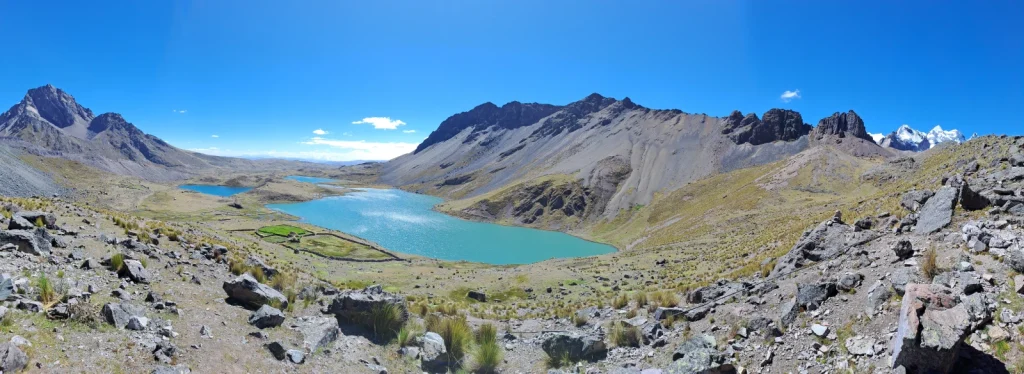
The whole area is a deep valley surrounded by the Apus Ausangate and Hatun Punta, plus other snow-capped peaks part of the Vilcanota Mountain Range.
Fourth segment, time to descend
After hiking about 2 km in this area, we started descending south-west bound. The next segment of our hike had 3 stunning stops waiting for us. The first one was the female otorongo or China Otorongo, a tiny lake with crystal clear waters. Follow by the male otorongo or Orco Otorongo, slightly larger than the former. Both of these bodies of water are considered sacred and are used by locals for ceremonial baths, their deep waters inspire respect and admiration.
To wrap up the sighting, we had Azulcocha (Blue Lake), this staggering lake is located in the base of Apu Ausangate, making for the perfect picture to capture the moment. Our guide told us, that from this spot sometimes is easy to observe avalanches coming down from the glaciers. We did spot some Vizcachas, an Andean rodent that looks like a mix between squirrel and rabbit.
The last 5km of the day took us about 1.5 hours, it was mostly descending, which made the return to Pacchanta more enjoyable.
Hot Springs
Once we were back in Pacchanta, a buffet lunch was waiting for us. A well-deserved reward after almost 13 km hiking above 4300 m. Once we refilled energies, was time to take a plunge in the Hot Springs.
Jorge told us that, these are natural geothermal pools fed by underground waters heated by the volcanic and tectonic forces in the Vilcanota Range. Also, the springs belong to the Pacchanta community, and both the entrance fees and basic infrastructure are managed locally.
After our muscles relaxed and the warmth reached out bones, it was time to drive back to Cusco. They dropped us around 6pm and that was the end of one of my favorite hikes while in Peru.
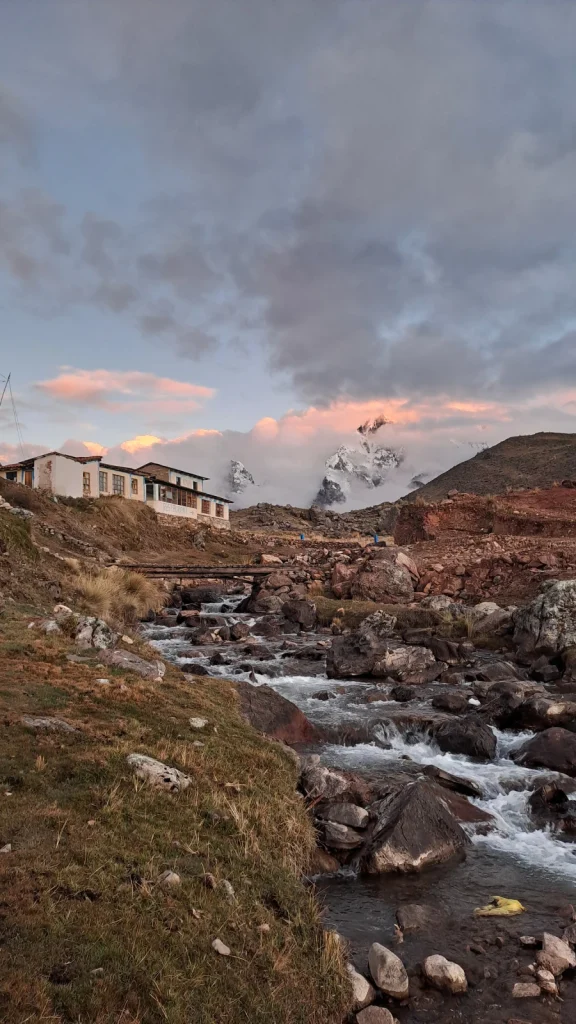
Highlights
My personal highlights include the landscapes, the trail itself, cultural immersion, the Vizcachas and the colorful lakes.
The landscape: from the drive along the South Valley to the stunning valley formed by the Vilcanota Range. The mind-blowing change of scenery is worth capturing in every single chance. The Puna and its unique terrain, filled with a desertic landscape and towering peaks in the background.
The trail: I was impressed by how the terrain along the trail not only changed material, from sand to hardpack clay and loose sand on top, but by color changes. Our guide pointed that on our way back, mentioning the soil will turn red the closer we would get to the end.
Wildlife: this time we spotted Vizcachas. So far, they’ve been my favorite animal in this trip. Plus, we observed some Cara Cara falcons. A long the trail we saw Llamas and Alpacas as well.
Lakes: Each one of the lakes has a distinctive color or shade, making this experience unique. Understanding how rich in minerals is the soil in this area and how it influences to the coloring of the waters, is something that only makes sense being there.
Cultural immersion: In Pacchanta, locals proudly preserve Andean traditions through colorful woven attire and community farming. Families cultivate native crops like potatoes and quinoa, herd alpacas and llamas, and welcome visitors to experience a lifestyle, which was experienced mostly during the meals.
Some stats I collected during this experience:
- Duration: Around 5.5 hours hiking, plus driving times and hot springs.
- Ending Point: Pacchanta
- Maximum altitude: 4630 m / 15191 ft
- Minimum altitude: 4307 m / 14130 ft
- Length: 13 kilometers / 8 miles
- Starting Point: Pacchanta
- Difficulty: Moderate
I strongly recommend this hike, if you are looking to delve deeper into the Andes and get closer to the wild backcountry.
Pro Traveler Tips
The hike is considered moderate to challenging due to the high altitude. While the trail itself is not overly technical, hikers should be in good physical condition and acclimatized to avoid altitude sickness.
69 Explorer Full day 7 Lakes loop costs around $35. It includes transportation, breakfast, buffet lunch, professional guide, entrance to Pacchanta and the Hot Springs.
Bring warm layers (temperatures can drop below freezing), a rain jacket, sun protection (hat, sunglasses, sunscreen), snacks, at least 1.5L of water. Trekking poles are highly recommended for stability at high altitude.
The best time is during the dry season (May-October), when skies are clearer and trails are more stable. The rainy season (November-March) makes conditions more challenging, with muddy paths and reduced visibility, though the landscapes are greener.
If budget isnt a big concern for you I would recommend these 2 operators, for their experience and top level of service:
- Sam Travel Peru: has a 2 day option including Rainbow Mountain.
- Orange Nation Peru: they offer a luxury level tour.

